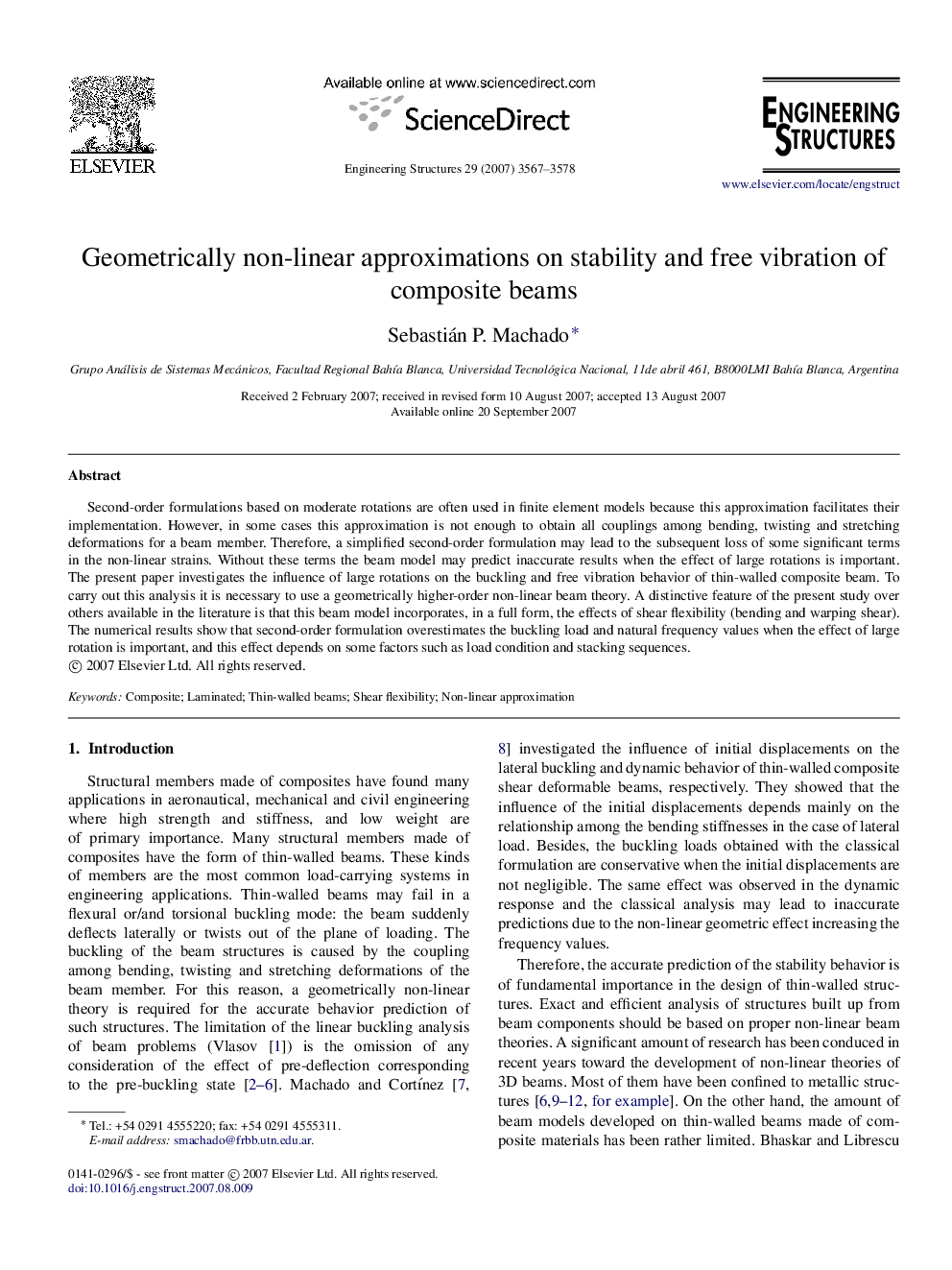| Article ID | Journal | Published Year | Pages | File Type |
|---|---|---|---|---|
| 268738 | Engineering Structures | 2007 | 12 Pages |
Second-order formulations based on moderate rotations are often used in finite element models because this approximation facilitates their implementation. However, in some cases this approximation is not enough to obtain all couplings among bending, twisting and stretching deformations for a beam member. Therefore, a simplified second-order formulation may lead to the subsequent loss of some significant terms in the non-linear strains. Without these terms the beam model may predict inaccurate results when the effect of large rotations is important. The present paper investigates the influence of large rotations on the buckling and free vibration behavior of thin-walled composite beam. To carry out this analysis it is necessary to use a geometrically higher-order non-linear beam theory. A distinctive feature of the present study over others available in the literature is that this beam model incorporates, in a full form, the effects of shear flexibility (bending and warping shear). The numerical results show that second-order formulation overestimates the buckling load and natural frequency values when the effect of large rotation is important, and this effect depends on some factors such as load condition and stacking sequences.
